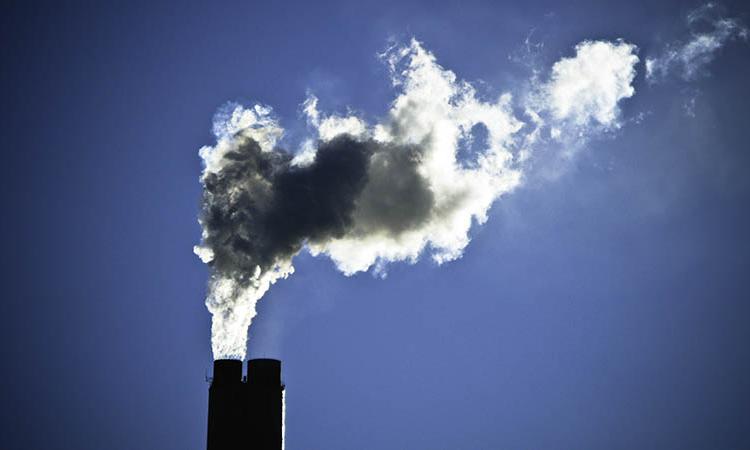
A detailed air emission inventory with a comprehensive list of pollutants within a pre-defined geographical area is beneficial for developing clean air action plans. It can also be used to test the effectiveness of pilot interventions towards air quality abatement.
A 'Catalogue of Indian Emission Inventory Reports' that aims to aid policymakers and scientists of all the work done in this area has been launched recently by The Energy and Resources Institute (TERI), in partnership with Environmental Defense Fund (EDF).
Emission inventories have been prepared earlier for several Indian cities and states, however several of these emission inventory reports have not been given due attention. "This report presents a database of all publicly available emission inventory reports and several previously un-referred studies for India to help policymakers and scientists prepare reckoner of all the work done in the area," TERI said during the document launch.
About 200 emission inventory reports have been collated and made available with hyperlinks for researchers and policymakers to use. They have also been sectorally classified for ease.
Emission inventory studies have been tabulated as per the source contribution (total emissions, transport, residential, industrial, power plants, agriculture, waste and others) along with details such as geography, grid size, emission factors used, and type of data collected (primary surveys or secondary literature). Each sector list also consists of the pollutants studied and highlights those reports that have adhered closely to the existing Central Pollution Control Board (CPCB) guidelines.
Highlighting how there is a greater emphasis on accurate and reliable emission data for all pollutants and all sources today, TERI Director-General, Dr Vibha Dhawan, in her message said, "Identification and quantification of emission rates from various sources have been practised for some time now. However, today with mandates from the Central Pollution Control Board, National Green Tribunal, MoEF&CC and the National Clean Air Programme (NCAP), many more cities are preparing emission inventories."
The report highlights the good practices of using indigenous emission factors and the importance of using primary data and activity surveys for ground-truthing. The report attempts to briefly outline the uncertainties associated with emission inventories.
During the course of collating all emission inventory reports, it was found that several researchers continue to rely solely on secondary data sets and use only foreign emission factors. Such inconsistencies in the existing body of literature show the need for developing and implementing systematic approaches towards data collection and reporting. They will ensure that the emission inventory reports are accurate and enable better source apportionment studies.
There have been a few reports at the pan-India level studies as well. However, there are considerable lacunae on the geographical spread of emission inventory reports. Predictably, Delhi NCR and states in the Indo-Gangetic Plain have several emission inventory reports. However, emission inventory reports are sparse in the southern and north-eastern states.
This is expected to change now as 132 non-attainment cities across India are part of National Clean Air Programme (NCAP) that has been launched by the Centre as a long-term, time-bound, national-level strategy to tackle the air pollution problem across the country in a comprehensive manner.
It aims to achieve a 20 per cent to 30 per cent reduction in Particulate Matter concentrations by 2024 keeping 2017 as the base year. The non-attainment cities are those that do not meet the prescribed air quality standards set by the Union Environment Ministry.
This will focus on developing their emission inventories and conducting source apportionment studies. As per various operating sections of the Air Act 1981, air pollution monitoring, calculation of pollution load, preparation of emission inventory, preparation of action plan for air pollution control should be done as per SOP issued by CPCB from time to time.
Therefore, emission inventory prepared by agencies and experts using other methodology may not be tenable per Air Act 1981. In its order for Critically Polluted Areas and Non-Attainment Cities, the National Green Tribunal mentioned that methodologies recommended by CPCB should be followed for such studies. In recent years the nature of pollution sources has evolved significantly. Identifying them is crucial for prioritizing actions to mitigate air pollution.
Cities are now implementing clean air action plans, and NCAP funding is tied to performance. Therefore, periodically revised emission inventories could help check the efficacy of actions in each sector. Finally, regional emission inventories need to be prioritised as currently, the airshed approach has gained prominence in the battle against air pollution.
An opportunity to develop standards
Further, several sources are not considered big emitters. Emission inventory of less studied sectors also provides essential information to develop standards. At present, there is the usual perception that these sources account for a tiny fraction of the emission load and hence do not warrant any measures.
For instance, emissions from restaurants and bakeries are significantly less than emission load from the transport sector. However, cumulatively these sources (including but not limited to construction and demolition waste, paved road dust, crematoria, bakeries and restaurants, diesel gen-sets) add up to a significant number. These sources are usually only accounted for total emission inventory studies, but we now need a more substantial push to develop individual emission inventory reports for such less studied sectors.
For instance, if emission inventory reports are developed for toxics coming from refuse burning or emissions from electro-plating units, there would be a need to create standards to devise any enforcement-based mitigation strategies.
However, accounting for these would first lead to the complete data for any city, and secondly would be crucial to formulating standards. There is no standard; there is no measurement and thus no monitoring. If seen from a larger perspective, every emission inventory with primary data collection provides us with the opportunity to strengthen our measures to control air pollution